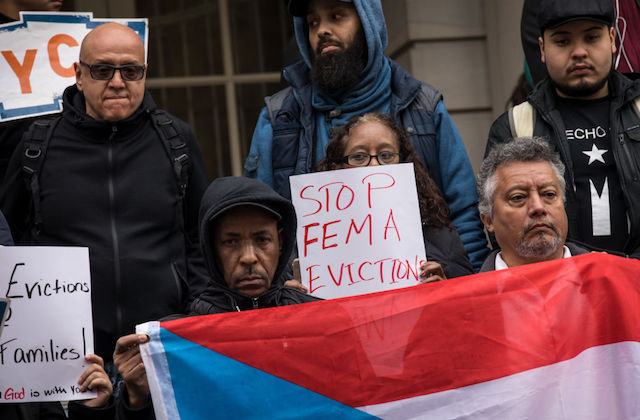FEMA Admits It Bungled Response in Puerto Rico After Hurricane Maria

After nearly 10 months of politicians, journalists and residents saying that the Federal Emergency Management Agency (FEMA) responded poorly to the devastation caused by Hurricane Maria in Puerto Rico, the agency has finally agreed that it could have done much better.
Yesterday (July 12), the agency released a report that is a self-assessment of how it handled the storm. Per The New York Times:
The Federal Emergency Management Agency’s plans for a crisis in Puerto Rico were based on a focused disaster like a tsunami, not a major hurricane devastating the whole island. The agency vastly underestimated how much food and fresh water it would need, and how hard it would be to get additional supplies to the island.
And when the killer storm did come, FEMA’s warehouse in Puerto Rico was nearly empty, its contents rushed to aid the United States Virgin Islands, which were hammered by another storm two weeks before. There was not a single tarpaulin or cot left in stock.
The report confirms that many of the criticisms made against the agency were correct, including FEMA’s failure to properly distribute food and generators. It also was insufficient in its efforts to move residents into hotel rooms and in getting clean drinking water to people. Puerto Rico experienced a total blackout, loss of water to half of the homes on the island and close to 5,000 deaths as a result of Maria.
Although President Donald Trump declared that he would give FEMA a 10 out of 10 for how it handled the response, other politicians and the courts disagreed. FEMA was meant to deliver more than 30 million ready-to-eat meals to the island within one month of the storm. In February, a Congressional committee led by Democrats launched an investigation as to how only 50,000 meals were delivered under a contract agreement worth $156 million.
One month later, in March, emails and texts were released in a letter written by Representative Elijah Cummings (D-Md.), ranking member of the House Committee on Oversight and Government Reform, and Stacey Plaskett, the House delegate from the U.S.Virgin Islands. The communications showed that FEMA did not respond to repeated texts and emails asking for generator fuel to refrigerate perishable food at supermarkets and chain stores. As a result, Walmart and other retailers threw away tens of thousands of dollars worth of meat, produce and dairy as people stood hungry in lines outside the markets.
And in June, FEMA announced it was discontinuing the voucher program, which allowed Maria survivors to live in hotels and motels on the U.S. mainland. A federal judge is expected to issue a decision on July 23 as to whether this change will be enforced.
One reason for the poor response was reduced manpower, says the report. When Maria hit Puerto Rico on September 20, FEMA workers were already in Florida and Texas as a result of hurricanes Irma and Harvey. FEMA admits it had thousands fewer on-the-ground workers than were needed—and that many who were there were not properly trained, as they had been pulled from other agencies.
Another reason cited in the report for the unsatisfactory response is related to geography. The report admits that FEMA was not prepared to manage a crisis outside of the continental United States. Per Time:
The report states that while the agency had committed to updating its Caribbean Response Plan before the 2017 season, the plan was incomplete by the time the hurricane hit, forcing the response operation to devise portions of the agenda on the fly. Plans also relied on a five-year-old earthquake and tsunami manual that had not anticipated a hurricane would affect the U.S. territory’s entire population of over 3 million.
In addition, FEMA cites Puerto Rico’s “insufficiently maintained infrastructure (e.g., the electrical grid),” and the island’s dire economic situation as further hampering its response.
Homeland Security Secretary Kirstjen Nielsen said in a statement that the report “provides a transformative roadmap for how we respond to future catastrophic incidents.”
